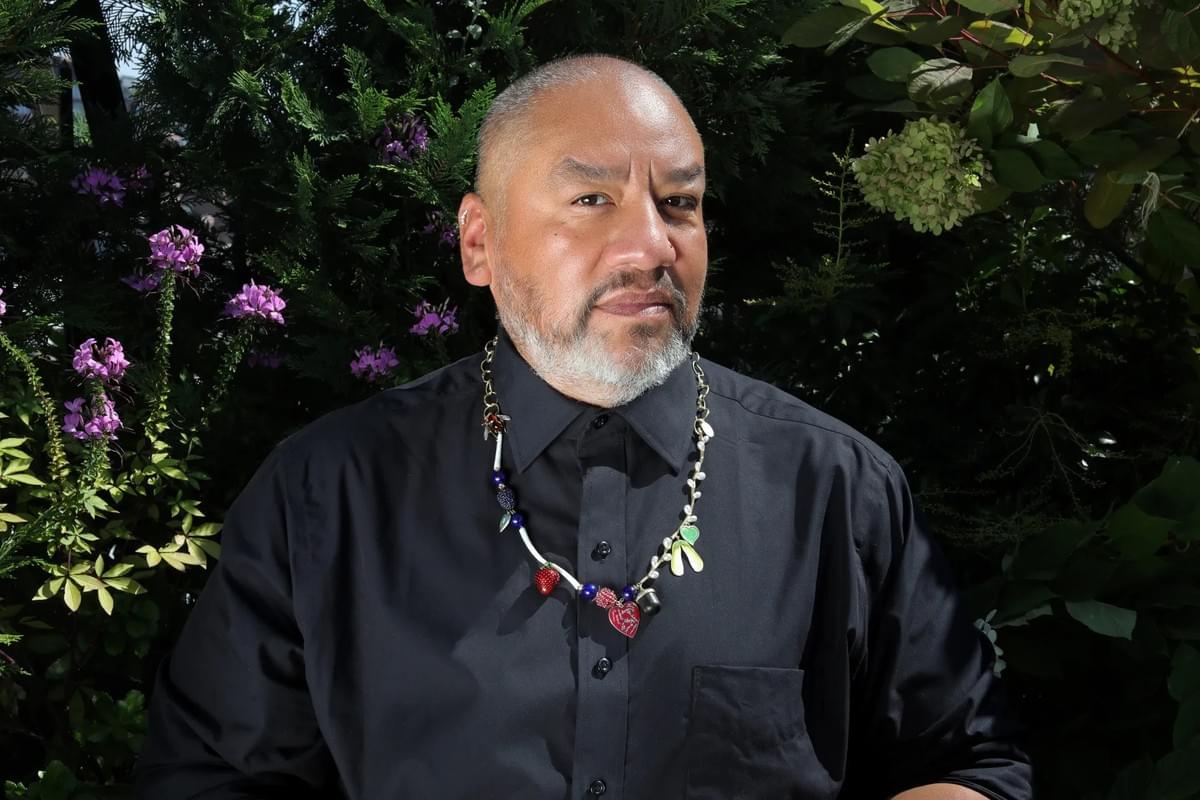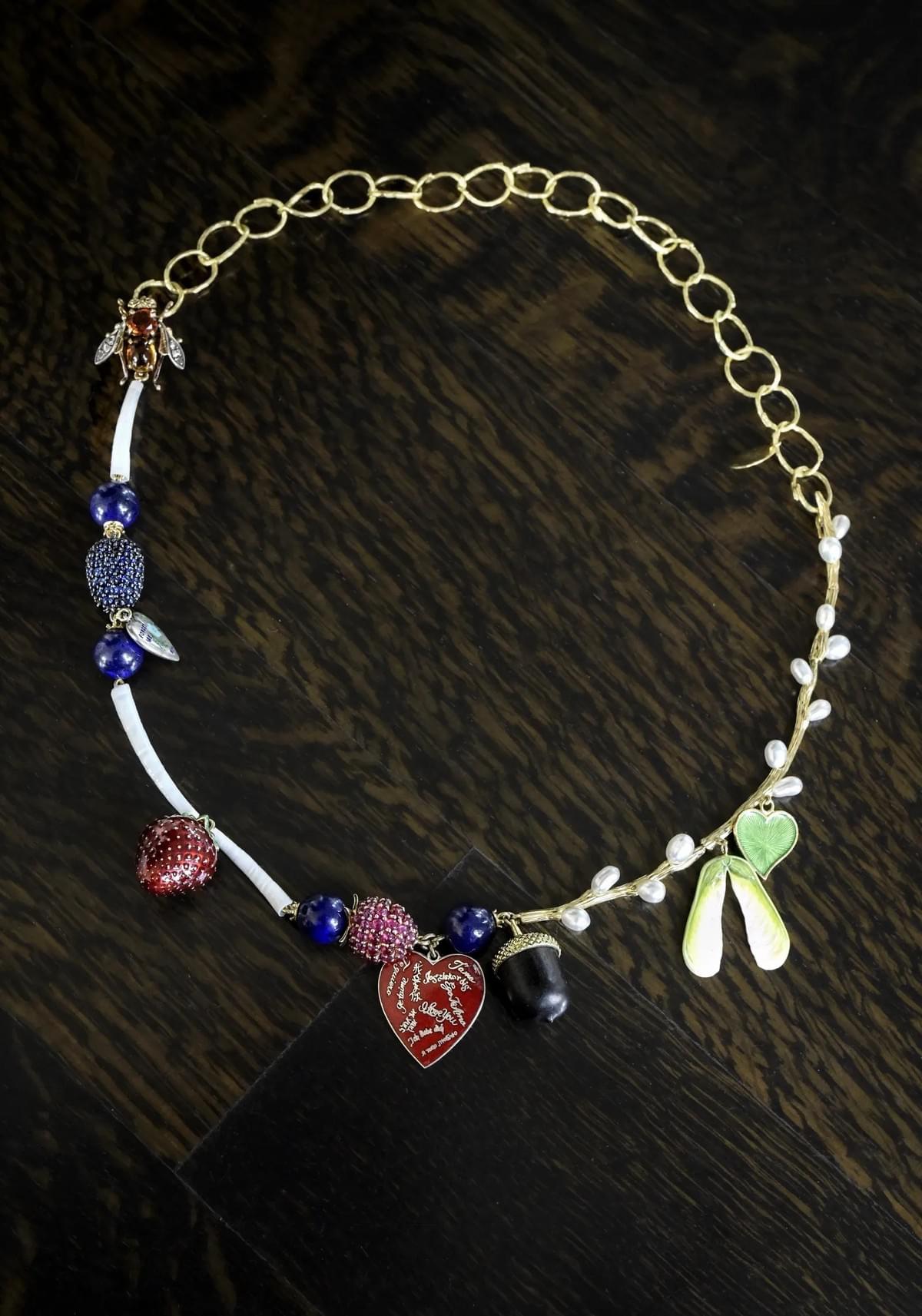From Sculpture to Jewelry: Jeffrey Gibson’s Bold Move
Earlier this week, leading Indigenous artist Jeffrey Gibson (Choctaw/Cherokee) unveiled his new outdoor façade at The Metropolitan Museum of Art. The interdisciplinary artist, best known for his paintings and sculptures, debuted four large-scale bronze sculptures—a coyote, a bird, a deer, and a squirrel—adorned with painted embellishments and titled The Animal That Therefore I Am. The sculptures, on view through June 2026, examine the Indigenous relationship to animals and the natural world, and how animals can embody narrative, memory, and presence. “I wanted to look at the representation of spirits and animals, and where the two forms cross over,” says Gibson.

Photo: Pamela Berkovic
But monumental art wasn’t enough—Gibson marked another milestone with a pivot into jewelry. Alongside his sculptures, he created 10 special-edition necklaces in collaboration with fine jewelry label Sidney Garber, produced by Sharon Coplan. Each one is priced at $100,000. Let’s be blunt: this isn’t just wearable art—it’s a test of how far luxury can stretch when it cloaks itself in cultural storytelling.
Storytelling Meets High Jewelry
“It was a dream project to invite Jeffrey to create a piece of artist’s jewelry that he would want to wear,” Coplan explains. Using precious materials and found pieces, Gibson built something bespoke, designed to be “worn and cherished.” Translation: $100K statements that mix high craft with personal narrative.
Naturally, Gibson’s approach to jewelry-making mirrors his art: storytelling first. Each of the 10 necklaces echoes his Met sculptures, pulling from nature and Indigenous design. “When it comes to things that I wear or imagine somebody wearing, I think of the beauty of natural things around us,” Gibson says. “As a Native person, I’ve always been aware of the huge spectrum of materials that we use. The goal was to bring Indigenous aesthetics, materials, and conversations into a broader mix of fashion, art, and design.” Admirable—but in a market where sustainable gemstones and traceable supply chains are rising, luxury buyers will want proof, not just poetry.
An Anatomy of Excess or Innovation?
Each handmade necklace features an 18-karat yellow gold chain, crafted to resemble twisted vines. “We took the little stems off maple leaves, tied them into a link, and casted those to make the links,” Gibson explains. Then come the flourishes: three dentalium shells from his studio; an acorn made of wood and 18K gold; berries rendered in enamel and gold (blueberries, strawberries, maple seeds, raspberries with cabochon rubies, blackberries with dark sapphires); a pussy willow branch in gold and keshi pearls. Every fruit was scanned digitally from fresh produce to capture exact shapes. It’s brilliant design—but if lab-grown gemstones and lab-grown diamonds can mimic nature with sustainable credibility, do we need six-figure necklaces that lean on symbolism rather than transparency?
Memory, Materials, and Meaning
Gibson also integrated his own longtime obsession with jewelry. Since his teens, he’s collected vintage pieces, so each necklace is finished with three found silver heart charms and a vintage bee brooch, personally sourced. “Charms are a form of memory,” he says. Even the packaging refuses to be ordinary—Anishinabe birchbark artist Patrick William Kruse built a custom birch box for each necklace. Yes, even the box screams art.
Ambitious? Absolutely. “It was like making 17 separate pieces of jewelry, because the necklace has so many different components, materials, and colors,” says Brooke Garber of Sidney Garber. They produced the pieces in New York, after endless back-and-forth to ensure Gibson’s vision was realized. But while the craftsmanship is stunning, I can’t help wondering: are we applauding complexity or just justifying excess in the language of culture?

Photo: Pamela Berkovic
Reclaiming Jewelry History or Ignoring the Future?
For Gibson, the project is deeply personal: “Jewelry is a way to adorn and collect ourselves, and to place ourselves in the world,” he says. He points out that Indigenous history once embraced flamboyant jewelry for men—until colonization stripped much of it away. These necklaces are his way of reclaiming that space. Noble intent, yes. But the world is moving toward Jewelry Guide standards of traceability, recyclability, and value alignment. For luxury brands and artists, hanging onto old models of exclusivity while ignoring ethical jewelry expectations feels dangerously outdated.
As for the future? Gibson hints he’ll “always design something for myself,” but calls this collaboration “once in a lifetime.” Maybe so. But in an age when GIA certificates, provenance reports, and sustainability audits shape credibility, will $100K story-driven art pieces resonate—or will they be remembered as beautiful but tone-deaf artifacts of a shifting luxury market?
